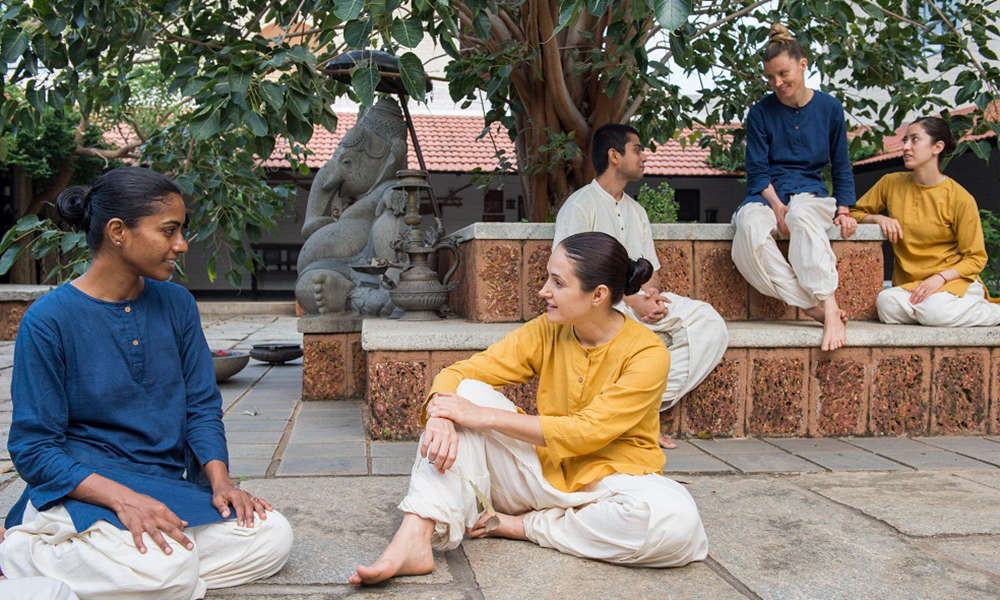- No Products In The Cart
- start shopping
Textiles of India
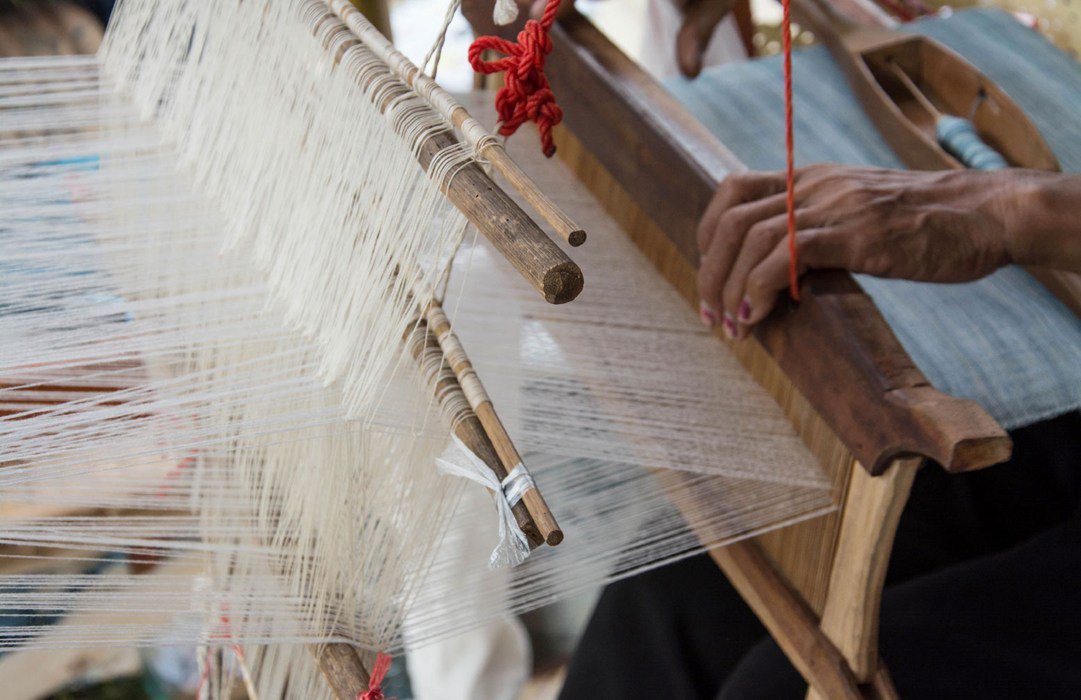
India has been well known for textile since very ancient times. The origin of Indian textiles can be traced to the Indus valley civilization as early as 5th millennium BC. The people of that civilization used homespun cotton for weaving their garments and used indigo to color their fabric. Textile has always played an important in trade and business here in India. Rome, China and Egypt everywhere traces have been found of Indian textiles. Still we can say India is textile hub and it has thousands of clusters which beautifully weave and give is the most beautiful fabrics which mesmerize our eyes. Listed here few of the fabrics/prints/embroidery of India.
KHADI
India Khadi is a handspun, hand-woven natural fiber cloth. Also known as khaddar during British era, depict purely India, or one say it’s a swadeshi fabric. Fibers are spun into yarn on a spinning wheel called a charkha. It is a versatile fabric, cool in summer and warm in winter. This doesn’t require more introduction.
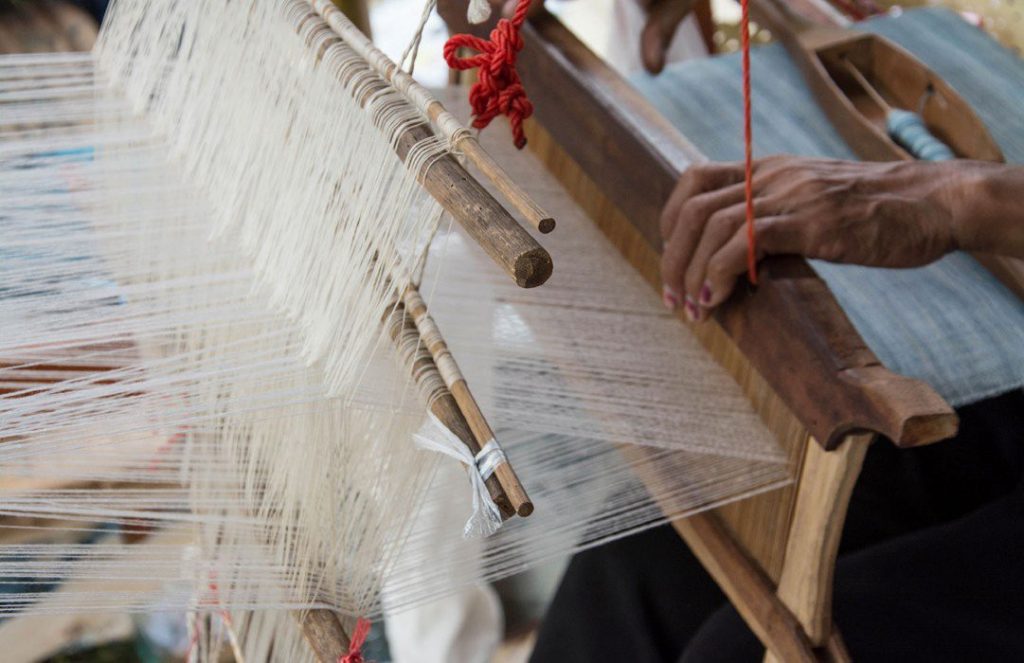
KALAMKARI — Andhra Pradesh
Kalamkari is a type of hand-painted or block-printed cotton textile. There are two distinctive styles of kalamkari art in India — the Srikalahasti style and the Machilipatnam style. The Srikalahasti style of kalamkari is done using a pen for freehand drawing of pattern and filling in the colors, is entirely hand worked. Machilipatnam style of Kalamkari work involves vegetable Dyed block-painting of a fabric.
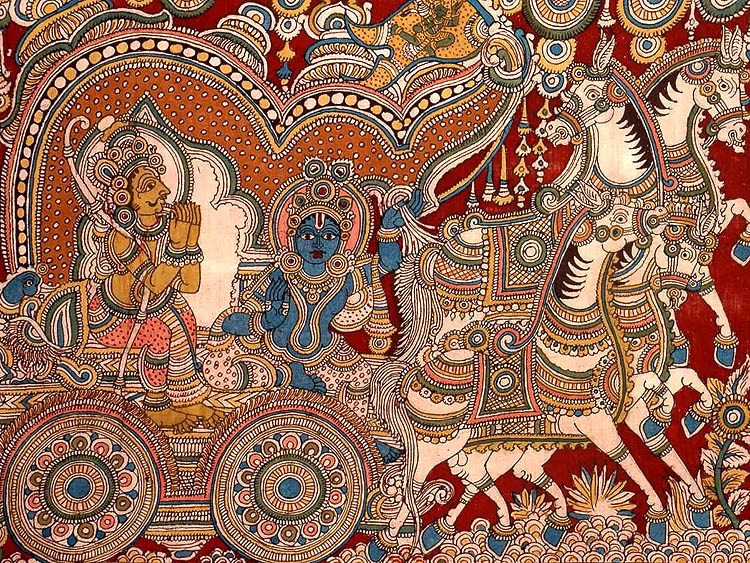
BANARASI SILK —Varanasi, Uttar Pradesh
Banarsi silk known for gold and silver brocade or zari, fine silk, and opulent embroidery. The saari is decorated with an intricate design inspired by Mughal, floral and foliate motifs, mango leaves motifs and minakari work.
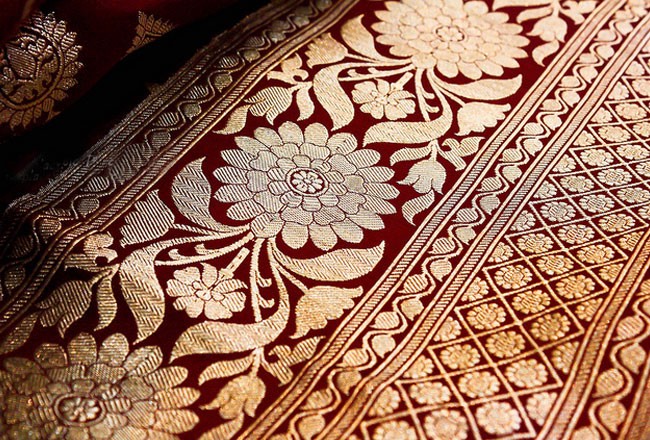
CHIKANKARI EMBOIDERY — Lucknow, Uttar Pradesh
Chikankari is an art, which results in the transformation of the plainest cotton and organdie into flowing yards of magic. The word ‘Chikan’ steps from a Persian word derived from ‘Chic’, which referred to the ‘Jali’ work done on marble or wood. Chikankari is a long running or darning stitch worked with six strands on the right side of the fabric taken over four threads and picking up one. Other styles of embroidery are backstitch, chainstitch, bakhiya, jail work, etc.
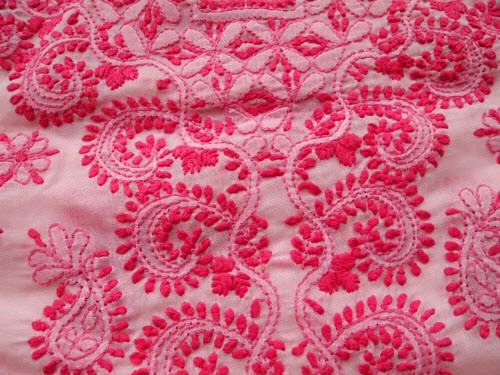
SAMBALPURI FABRIC — Sambalpur, Odisha
Sambalpuri is a traditional handwoven ikat wherein the warp and the weft are tie-dyed before weaving. The fabric incorporates of traditional motifs like shankha (shell), chakra (wheel), phula (flower). In this technique, the threads are first tie-dyed and later woven into a fabric, with the entire process taking many weeks.
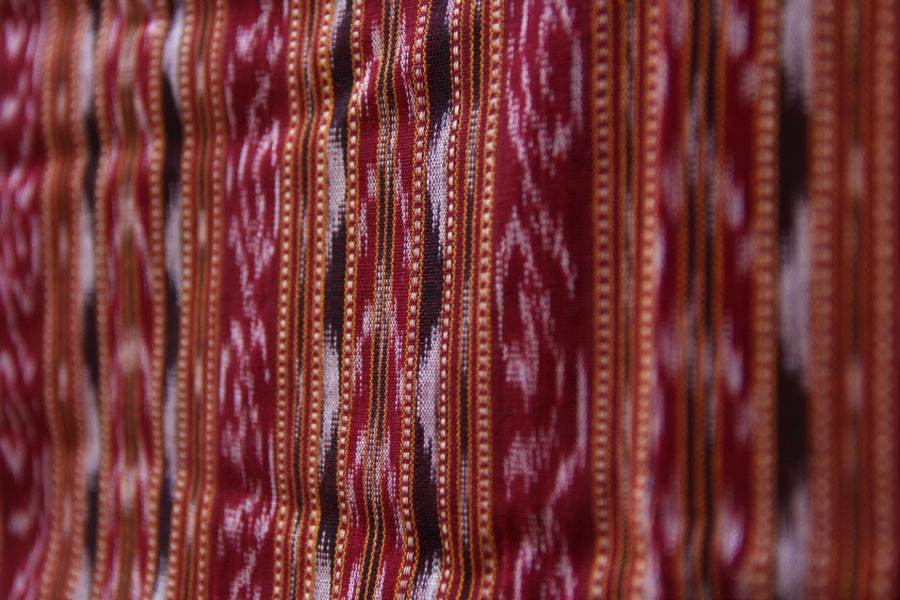
IKAT FABRIC — Pochampalli, Hyderabad
This double ikat textile is known for its geometric pattern and an intentional bleed. The process used to do so is known as Resist Dyeing also called ikat, wherein a host of methods are used to prevent the dye from spreading all across the fabric. The place Pochampally has got it place in UNESCO World heritage site as a part of iconic weaving cluster of India.
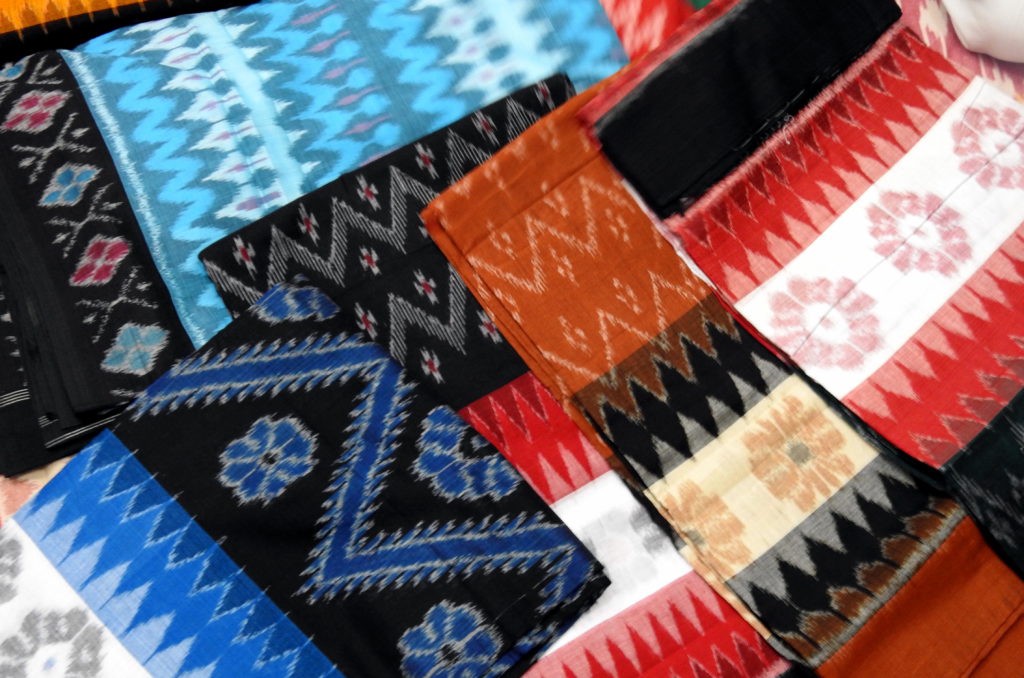
CHANDERI — Madhya Pradesh
A beautiful blend of Cotton, Silk thread and zari results to Chanderi fabric. Traditional looms are used as a primary means of production. These include Dobby & Jacquard Looms. Most Chanderis have a rich gold border and butis all over fabric. Some have gold checks or little motifs (known as butis). The yarn used in Chanderi fabric is of high quality and extra fine. Because of non-degumming of the raw yarn, the finished fabric produced is extremely transparent and which in consequence result into sheer texture.
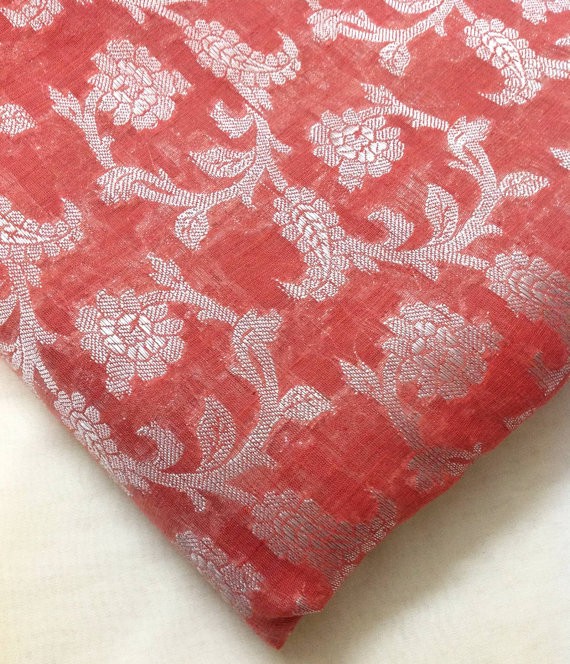
PAITHANI BROCADE — Aurangabad, Maharashta
The art of weaving Paithani is 2000 years old. The fabric looks exactly same on the both sides. . It is made of silk with an ornamented zari pallav and border. Traditional vines and flowers, shapes of fruits and stylized forms of birds esp peacock are used as motifs is weaved in rainbow colors.
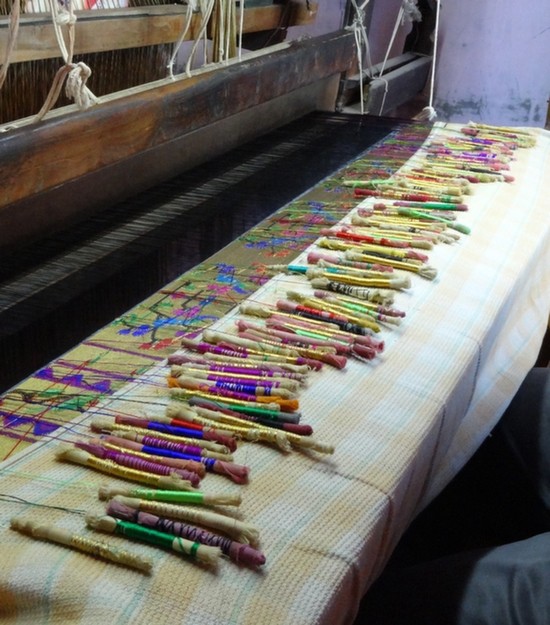
PATOLA FABRIC- Patan, Gujarat
Patola is a double ikat woven fabric, usually made from silk. Patola means “Queen of Silks” are woven with great clarity and precision. Expensive due to their labour intensiveness, each patola sari may take from six months to one year to be made.
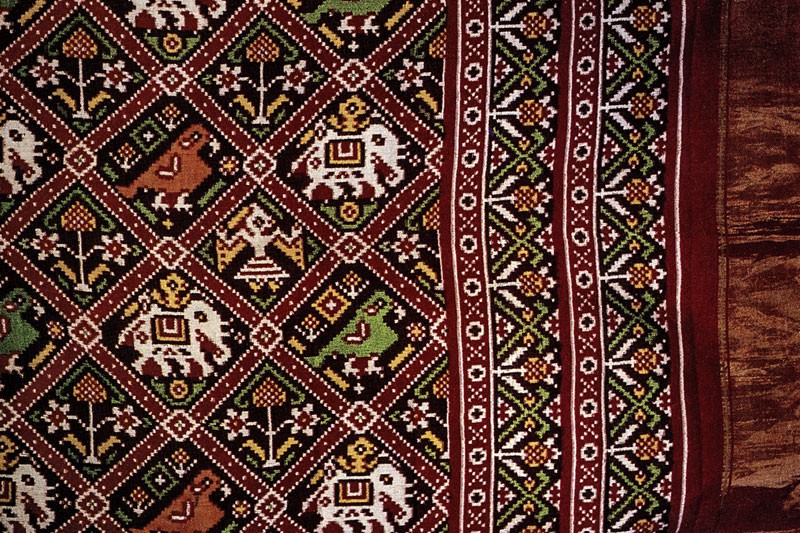
PASHMINA — Kashmir
Pashmina is made from fineness of the cream coloured goat’s wool having intricate embroidery. Pashmina meaning soft gold in Kashmiri, some designed are hand block printed and those blocks sometimes date back to more than 100 years. It takes a week to get a single shawl of pashmina. Hand embroidery is done on the shawl which takes more time to make it an end product. The tedious work makes it one of the costliest fabric.
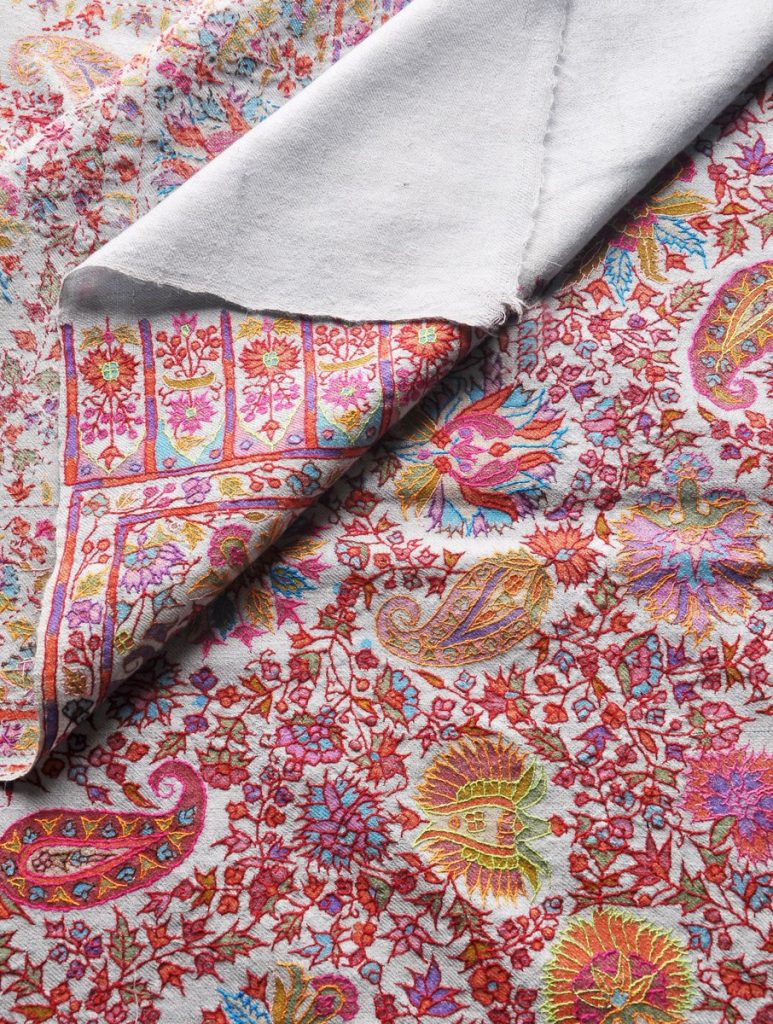
PHULKARI — Punjab
Phulkari, which literally translates into ‘flower work. With the simplest of tools, a needle, a silk thread and a high degree of skill the Punjabi’s are able to create the most amazing flowery surface designs. Phulkari pattern revolves around a solitary stitch.
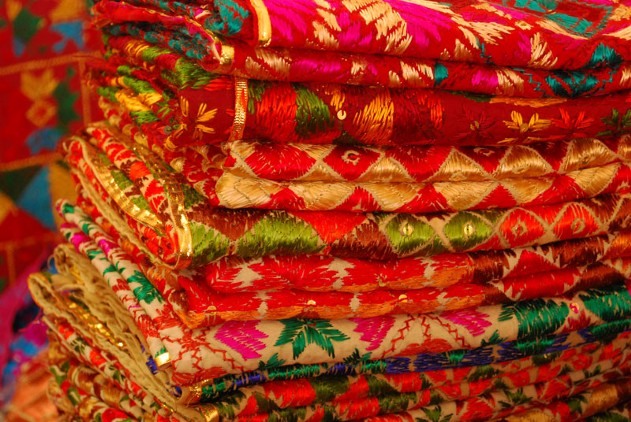
BANDHNI — Gujarat (also Rajasthan)
Dyed in tie & dye style, the art of bandhani is a highly skilled process. In this the fabric is tied into small points with threads and when dyed, the knotted parts remain uncoloured. Different types of tying methods are leheriya, ,mothda,ekdali, trikundi, chaubandi, etc. It is also known as Bandhej, and is made on superfine cotton, mulmul, muslin, etc
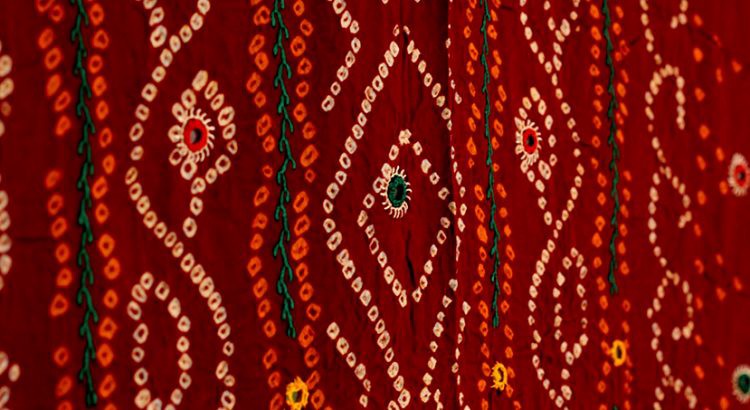
KANJIVARAM — Kanchipuram, Tamil Nadu
Kanjivaram is woven from pure mulberry silk with three ply, using thick zari forming unique and intricate designs in the sari. Weavers use Korvai method of weaving in which different colored yarn for body and border are interlinked.
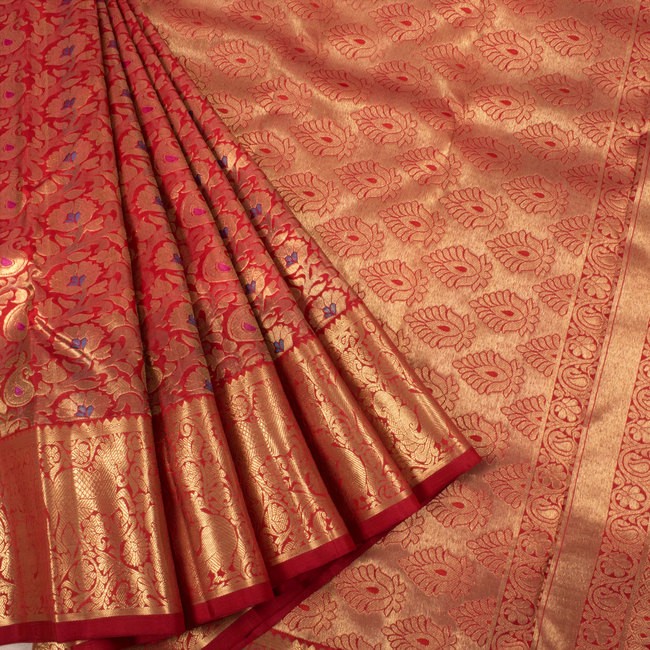
MYSORE SILK — Mysuru, Karnataka
Made from Mulberry silk and carrying historical importance the Mysore Silk sarees are luxuriant, uniquely minimalistic, elegant and continue to stand out with all these qualities though machine made. The sarees have plain single colour base fabric of 100% pure silk blended with a narrow strip of gold zari border at both ends. The weaving process involves two types of looms — the Dobby loom and the Jacquard loom.
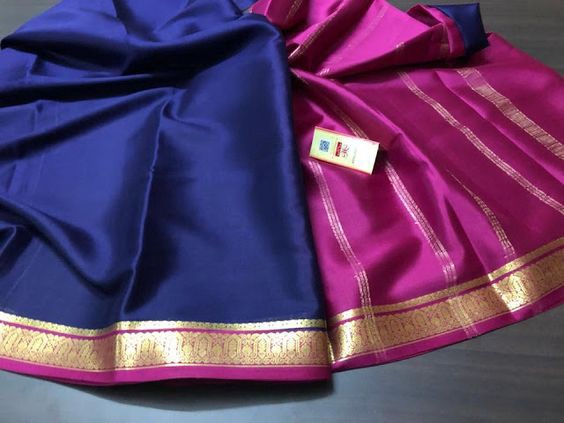
KINNAURI SHAWLS — Kullu, Himanchal
Their geometrical patterns have religious meaning and the colors of the thread used for embroidery represent the elements of nature — water (white), air (green), earth (yellow), ether (blue) and fire (red). Frame looms are mainly used to weave the shawls and the embroidery is done by hand. The raw material that is used is Merino wool, local sheep wool and Pashmina wool.
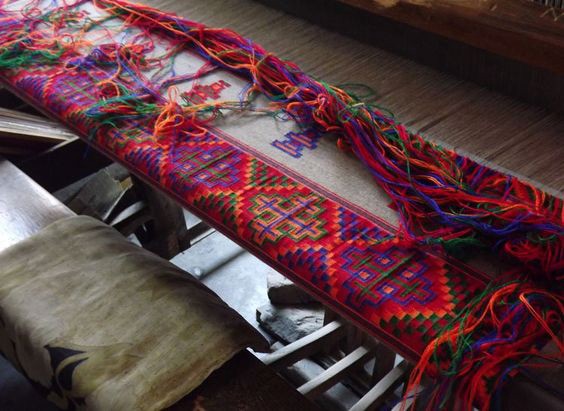
JAMDANI — West Bengal
Jamdani means, a vase of flowers. History of this fabric dates back to the early ages, wherein mentions of the fabric are seen scripted in Arthashashtra written by Kautilya. The glory of this fabric can also be seen mentioned in the writings of Chinese, Italian, and Arab travelers. Basically this fabric is of unbleached cotton yarn. Saris are woven using this method are called as terchha. The part of the sari which goes over the shoulder is decorated with motifs called jhalar.
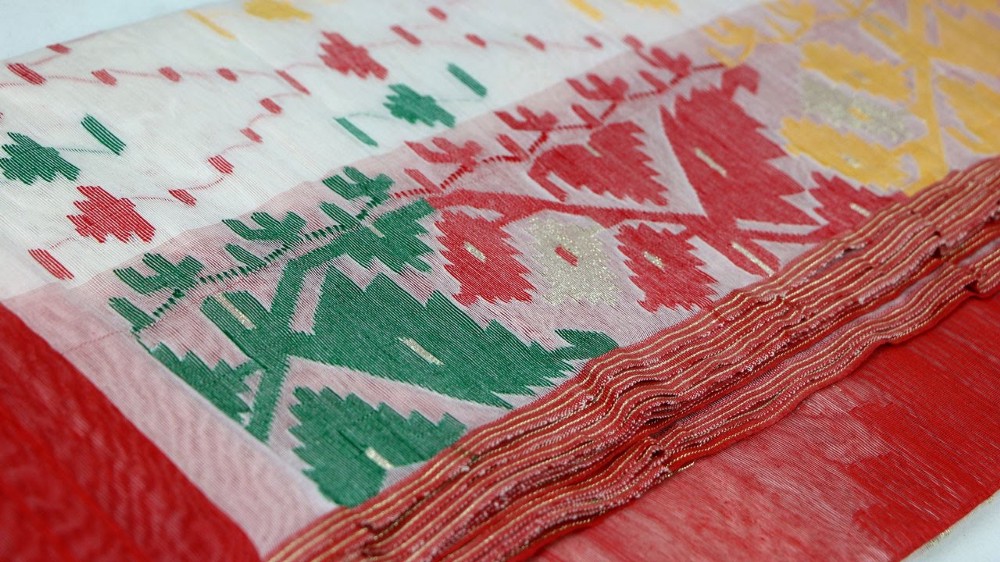
MUGA SILK — Assam
Muga silk, which is mainly produced by the Garo community of Assam, is obtained from semi-domesticated multivoltine silkworm. The most significant characteristic of ‘Muga silk’ is its golden bright hue.
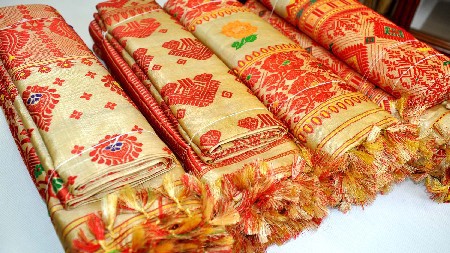
KASAVU — Kerala
Kasavu is a handwoven cream colored saree with gold border. The sari also found its place in a number of beautiful paintings by Raja Ravi Varma.
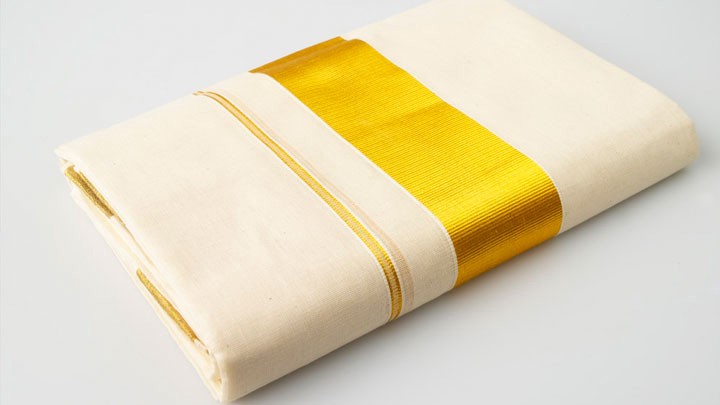
MADRAS CHECKS (plaid) — Chennai, Tamil Nadu
Madrasi checks are lightweight cotton fabrics with patterned texture and plaid design. Mostly used as summer clothing, the fabric has inherited its name from the Chennai city which was formerly known as ‘Madras’. Due to high labour structure, the fabric is getting faded from India and Bangladesh is now preferred to buy this fabric. The main color is red and the process is yarn dying.
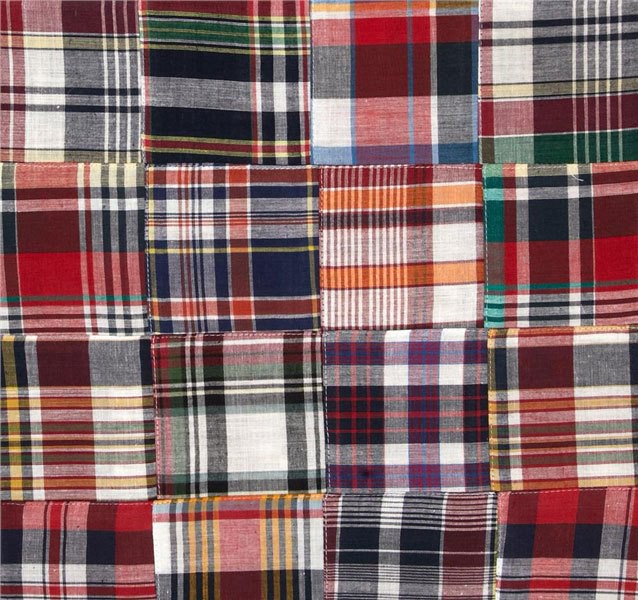
BHAGALPURI SILK — Bhagalpur, Bihar
Also known as the ‘Queen of all fabrics’. The yarns are weaved with silk threads of multi colors which are reared from the Tussar cocoons. They are weaved into exotic and symbolic designs and motifs or leave it plain weave in its pure texture and feel.
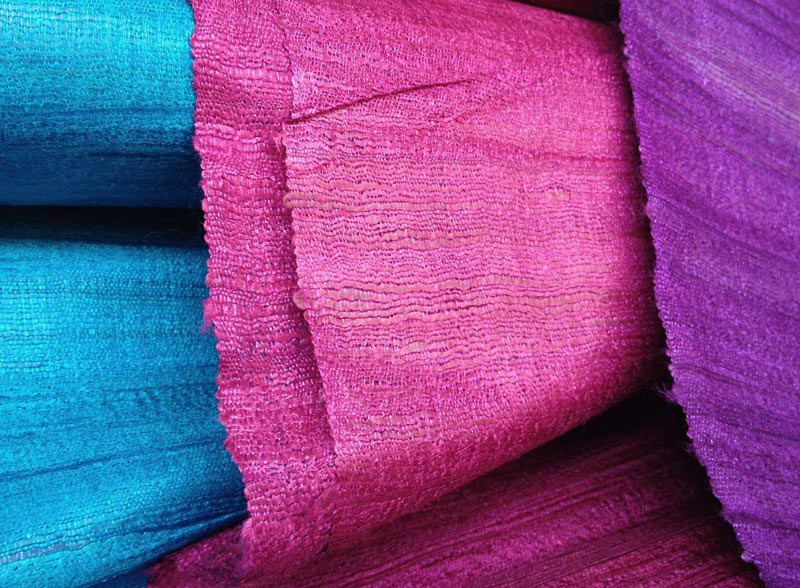
LEPCHA — Sikkim
In ancient times, the Lepcha’s of Sikkim were said to use yarn spun out of stinging nettle (sisnu) plant to weave clothes. Today cotton and woollen yarn are used with vegetable dyes and synthetic colours. The colors used are white, red, black, yellow and green.
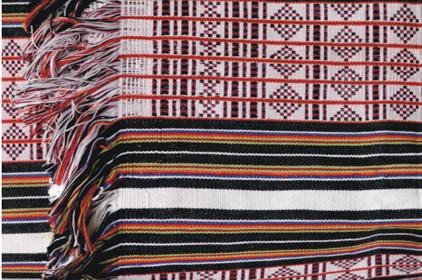
KOTA DORIA — Kaithoon village, Rajasthan
Kota Doria fabric have square weave pattern which makes it one of the finest open weave fabric .The cotton, silk and zari (fine metal threads) yarns is weaving on the pit loom that produces these patterns. The cotton yarn provides stiffness and silk provides lustre to the fabric.
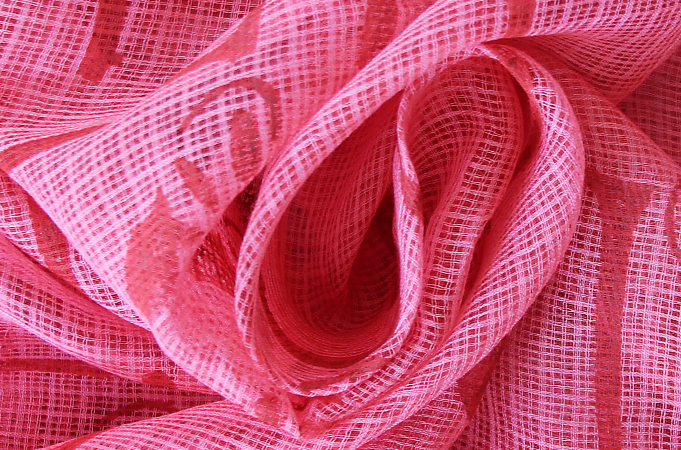
AJRAKH — Kutch Gujarat & Barmer Rajasthan
The term “Ajrak”, may be derived from “Azrak”, meaning blue in Arabic, as blue happens to be the one of the principal colours in Ajrak printing. Printing is done with natural dyes, using carved wooden blocks for pattern.
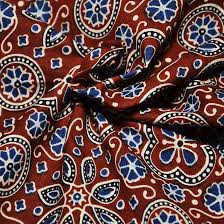
Reference link:(https://medium.com/@noopurshalini/textiles-of-india-d9f5e5310dc6)
